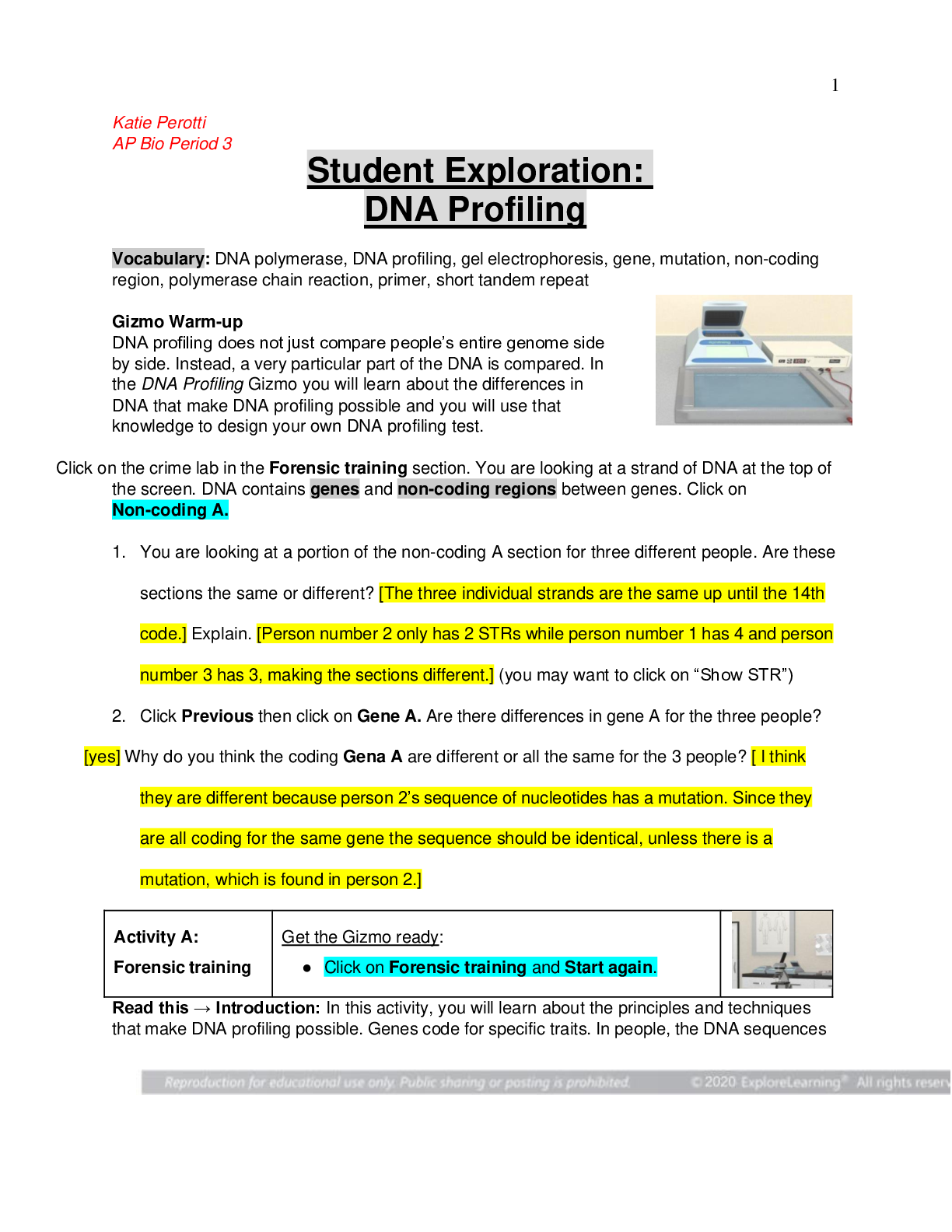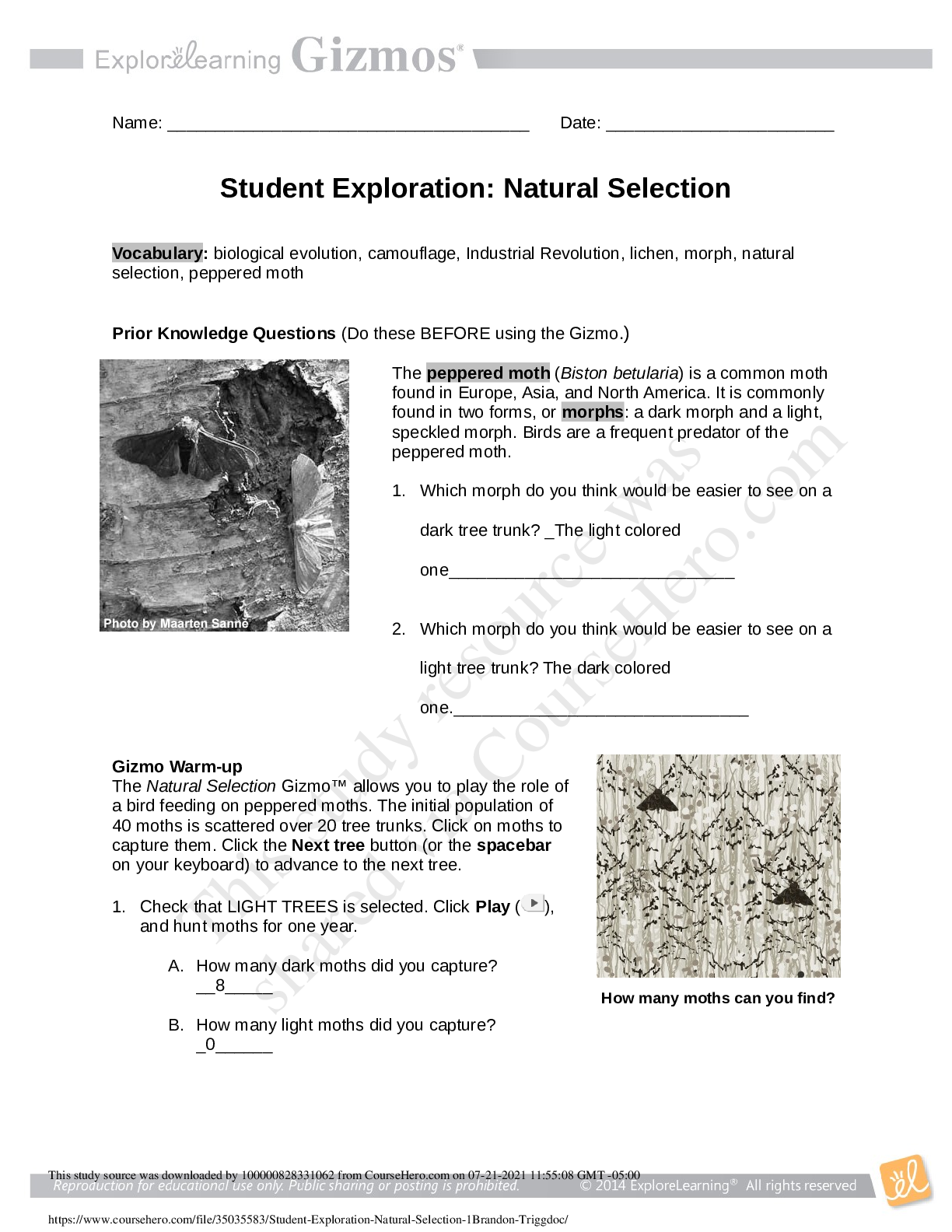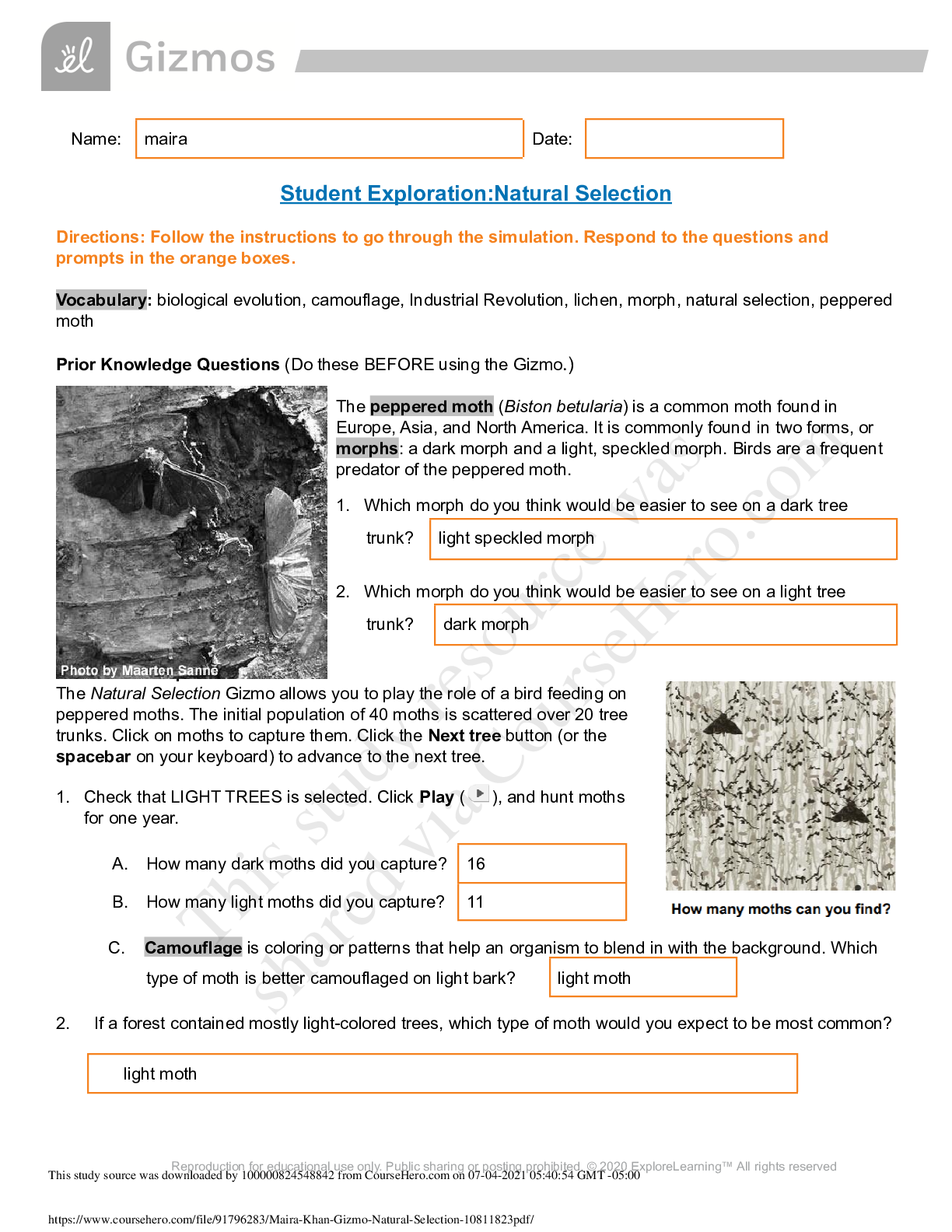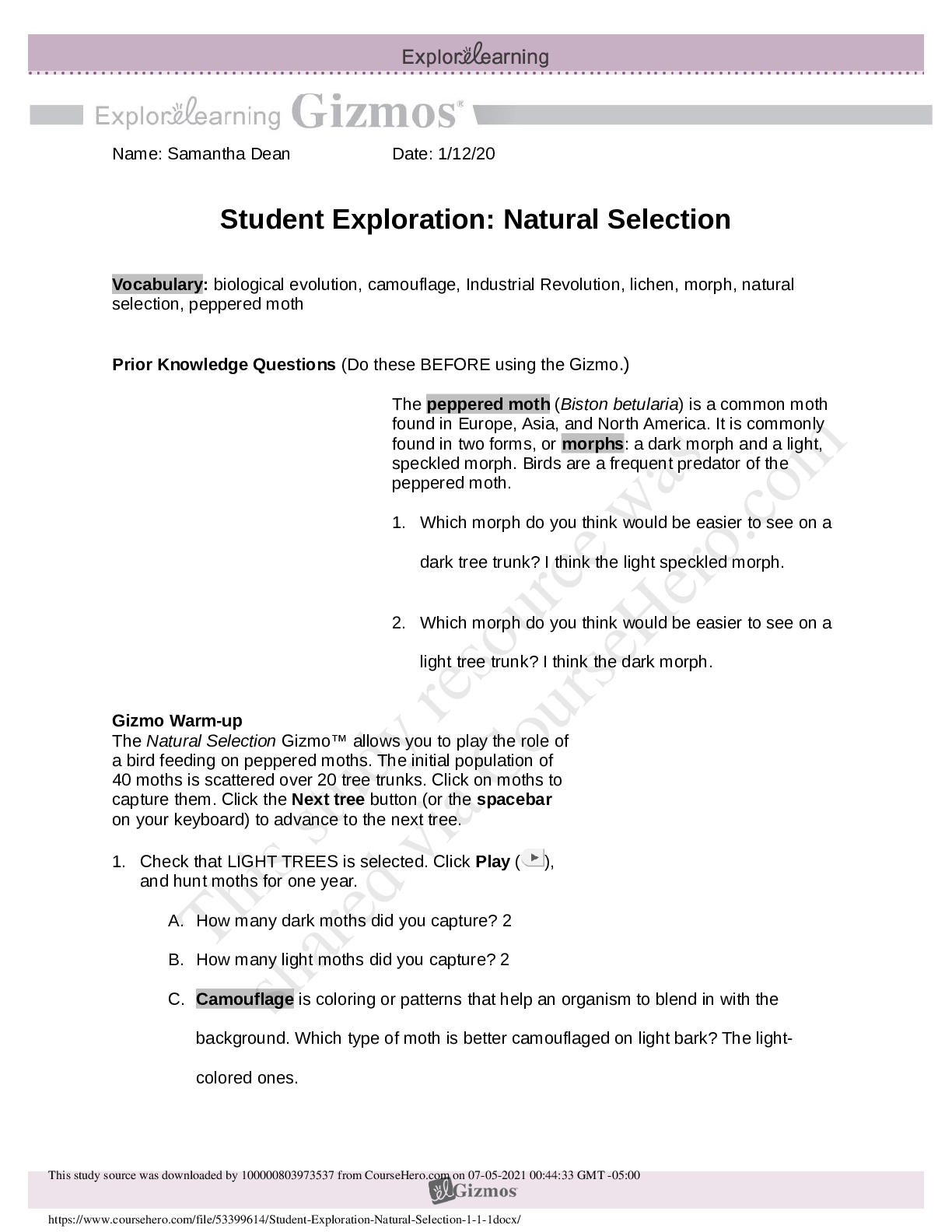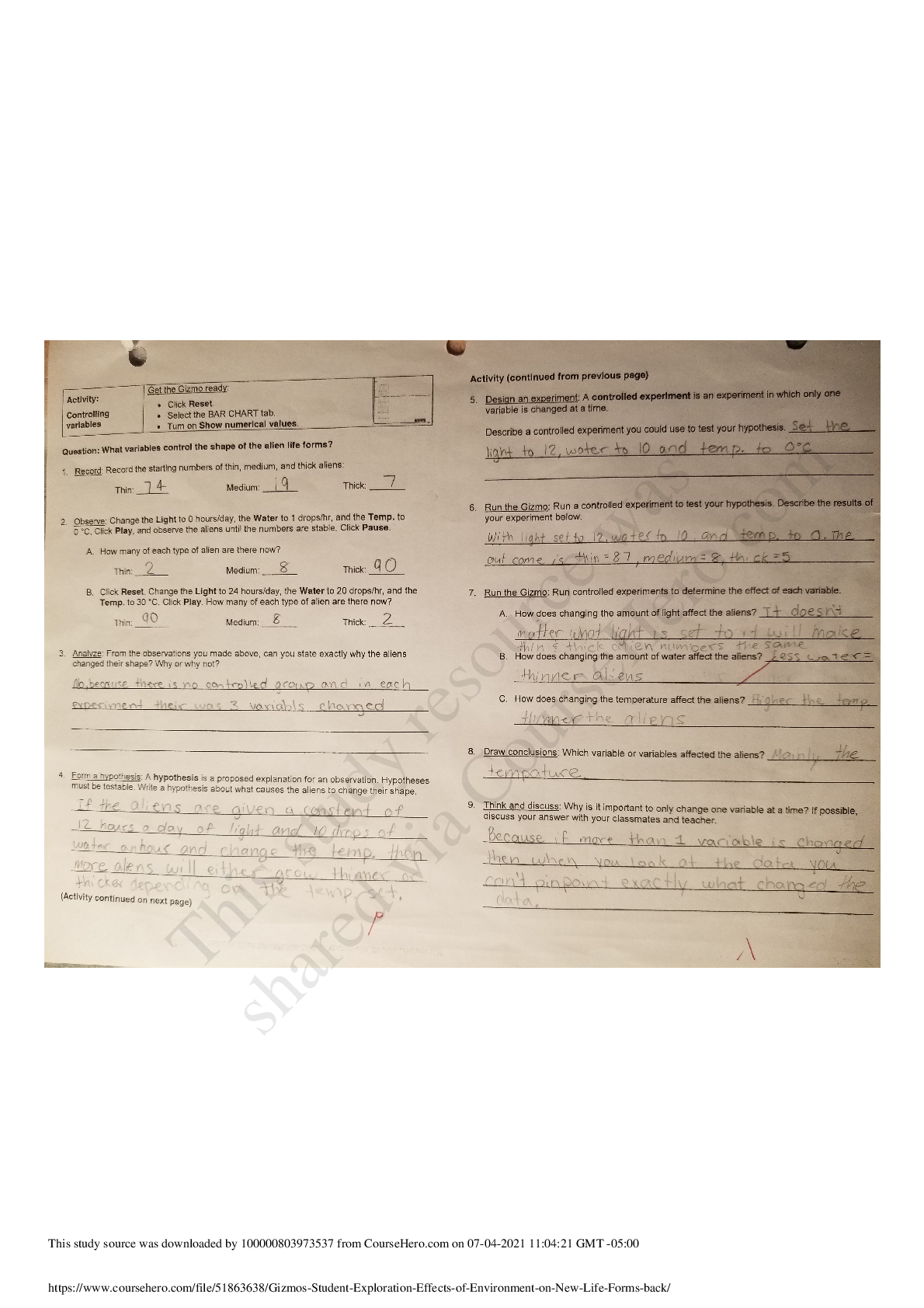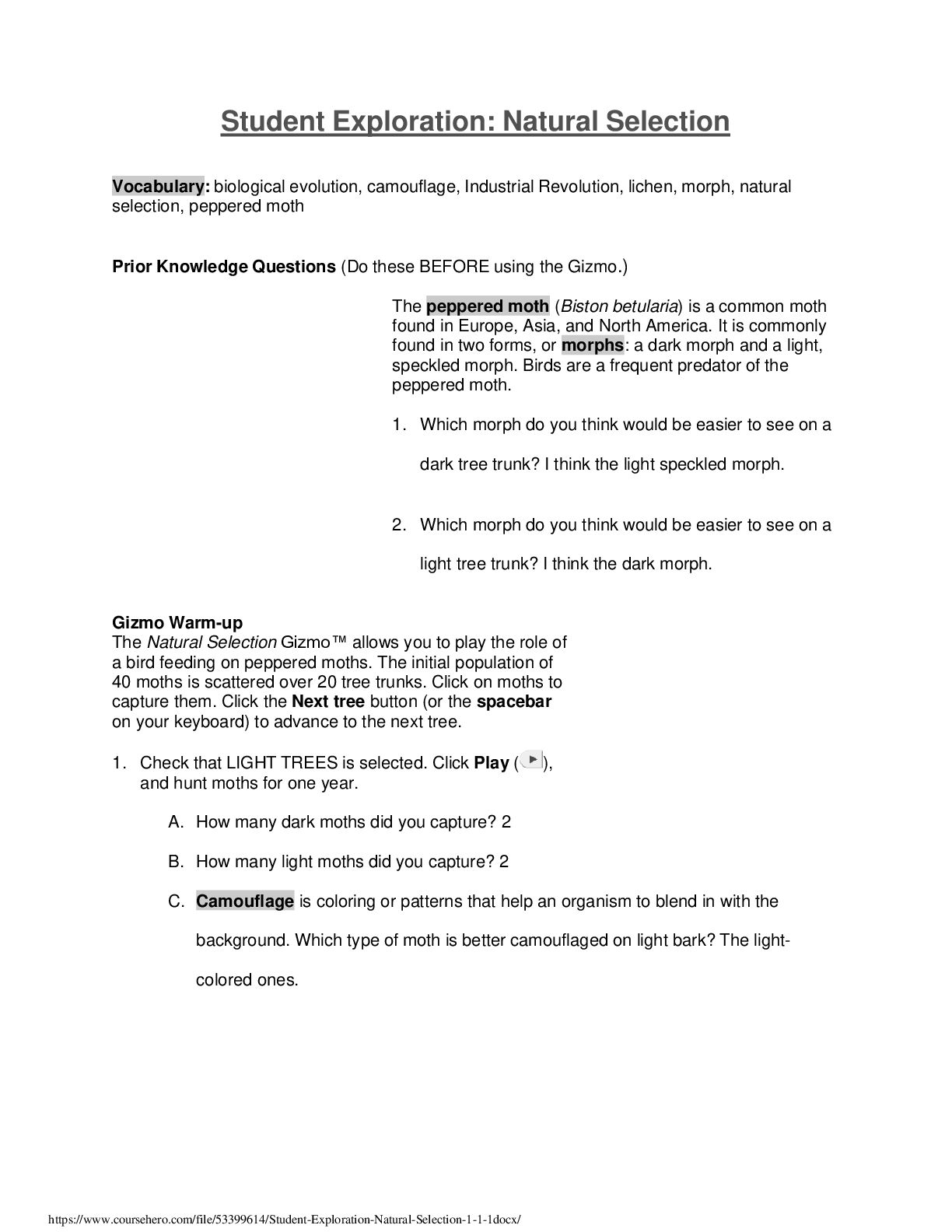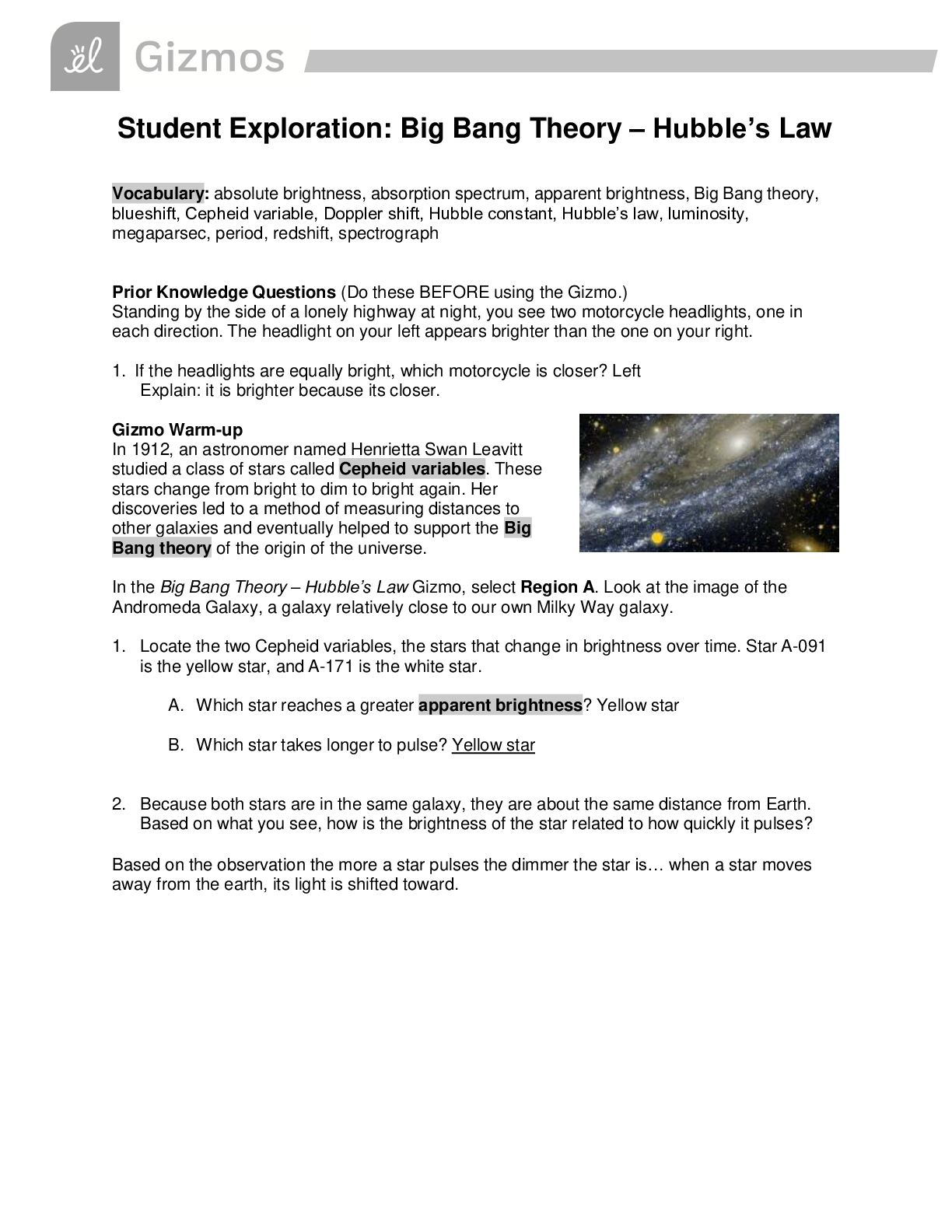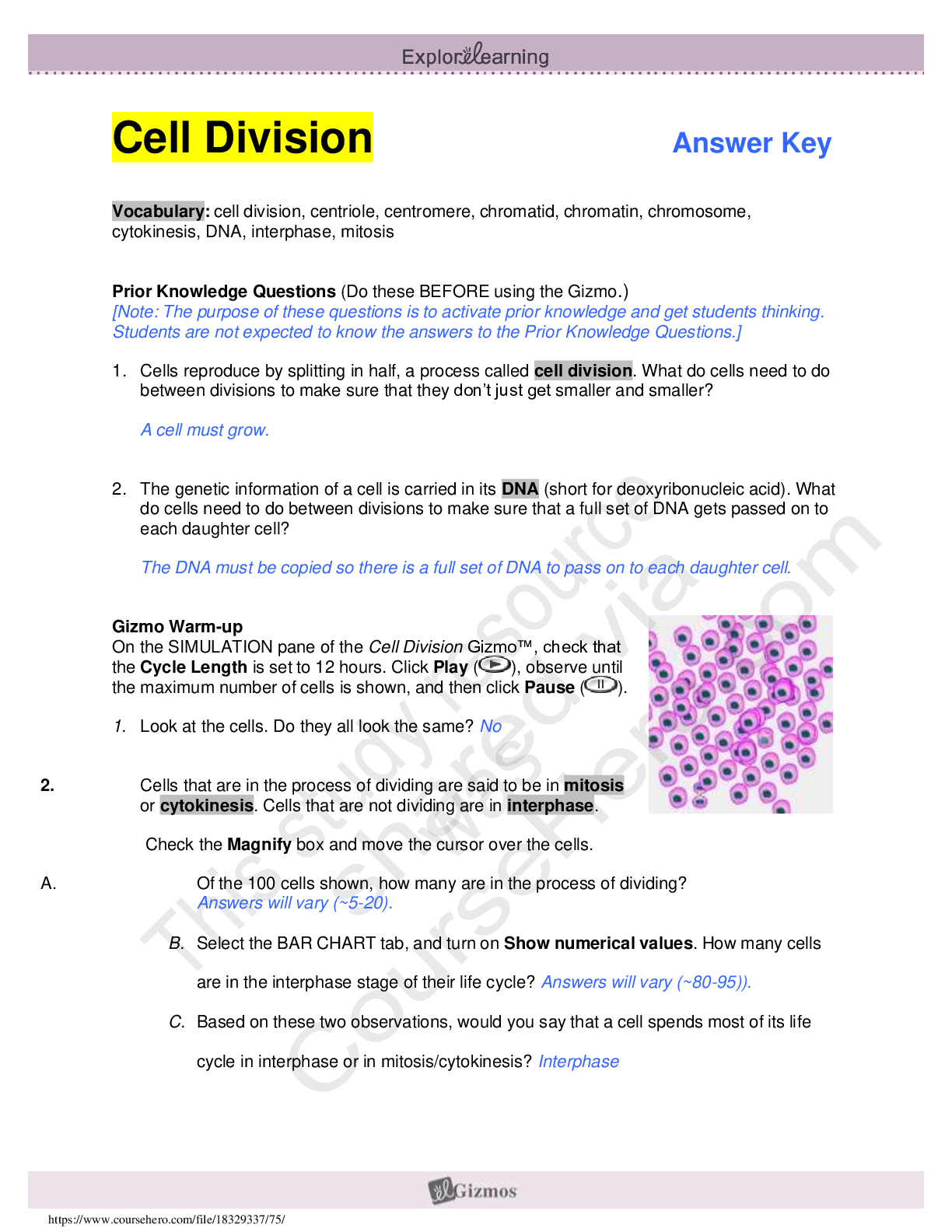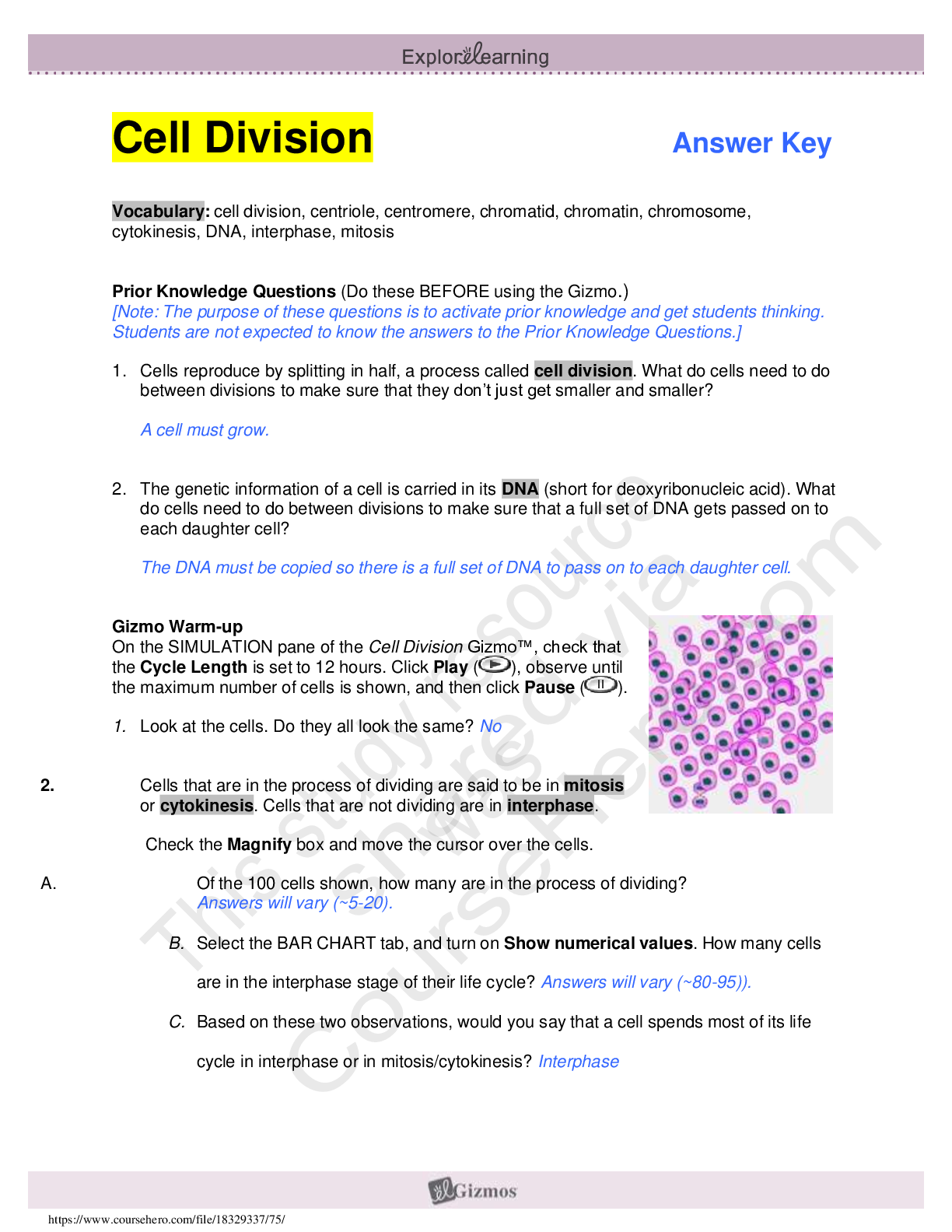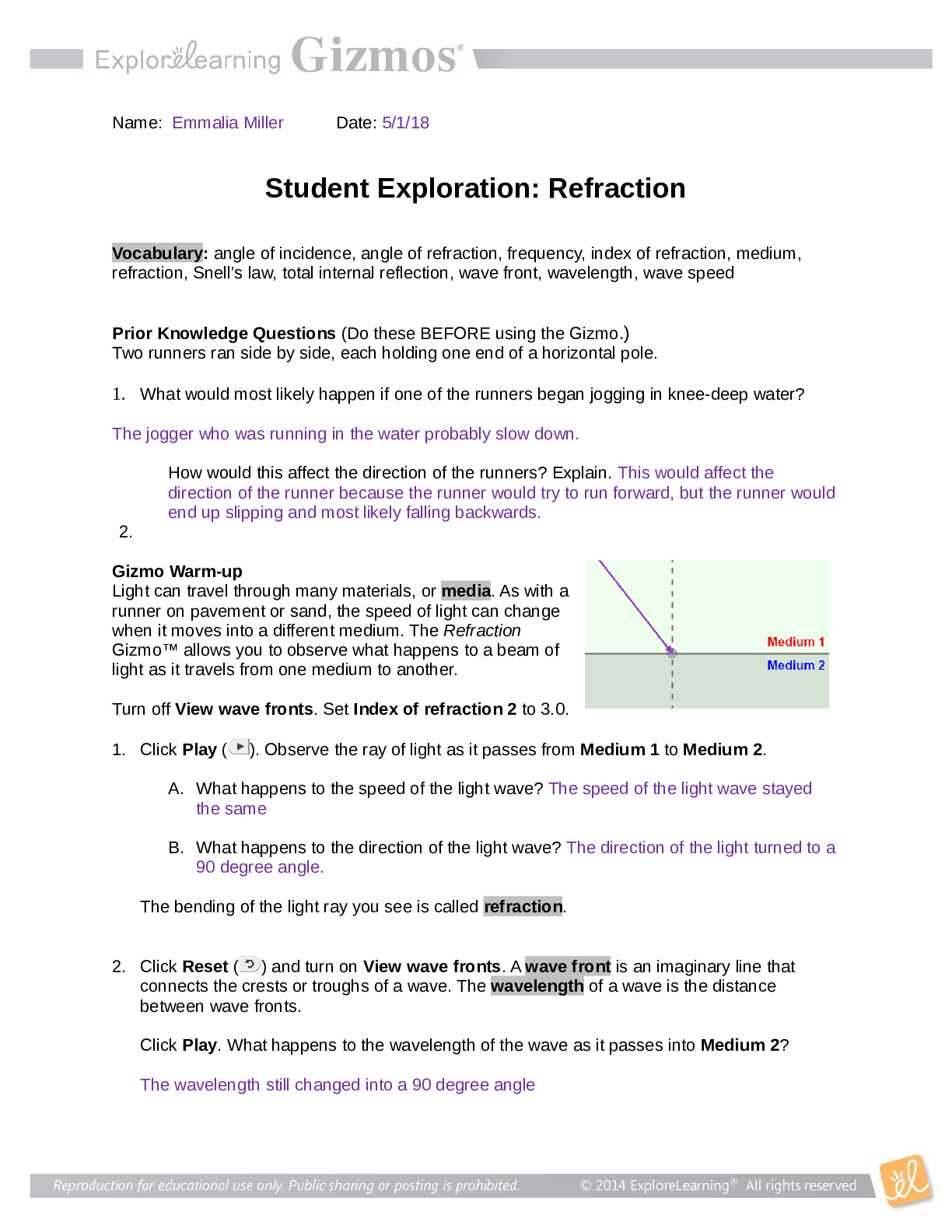Mathematics > GIZMOS > Student Exploration - Natural Selection (All)
Student Exploration - Natural Selection
Document Content and Description Below
The peppered moth (Biston betularia) is a common moth found in Europe, Asia, and North America. It is commonly found in two forms, or morphs: a dark morph and a light, speckled morph. Birds are a freq... uent predator of the peppered moth. 1. Which morph do you think would be easier to see on a dark tree trunk? _The light colored one 2. Which morph do you think would be easier to see on a light tree trunk? The dark colored one. Gizmo Warm-up The Natural Selection Gizmo™ allows you to play the role of a bird feeding on peppered moths. The initial population of 40 moths is scattered over 20 tree trunks. Click on moths to capture them. Click the Next tree button (or the spacebar on your keyboard) to advance to the next tree. 1. Check that LIGHT TREES is selected. Click Play ( ), and hunt moths for one year. A. How many dark moths did you capture? 8 B. How many light moths did you capture? _0 How many moths can you find? C. Camouflage is coloring or patterns that help an organism to blend in with the background. Which type of moth is better camouflaged on light bark? _The light colored one can hide easier. 2. If a forest contained mostly light-colored trees, which type of moth would you expect to be most common? I would think the light ones would be more common. Introduction: Before the 19th century in England, the air was very clean. The bark on trees was usually light in color. Abundant lichens growing on tree trunks also lightened their appearance. Question: How does the color of a peppered moth affect survival? 1. Predict: Over time, what will to happen to the populations of light and dark moths on light trees? _The light ones will increase and the dark ones will decrease. 2. Experiment: Click Play and hunt peppered moths on light tree trunks for five years. In each year, try to capture as many moths as you can. Note: You can use the spacebar on your keyboard to quickly advance to the next tree. After 5 years, select the TABLE tab and record the percentages of each moth type. (Note: The table shows current populations of each moth, not the number of captured moths.) Year Dark moths Light moths 0 50 50 1 35 65 2 17 83 3 0 100 4 0 100 5 0 100 Then click the GRAPH tab, click the camera icon on the upper right to take a snapshot of the graph of your 5 year totals. Paste the snapshot into the lab report in the space below .................................................CONTINUED........................................... [Show More]
Last updated: 1 year ago
Preview 1 out of 8 pages
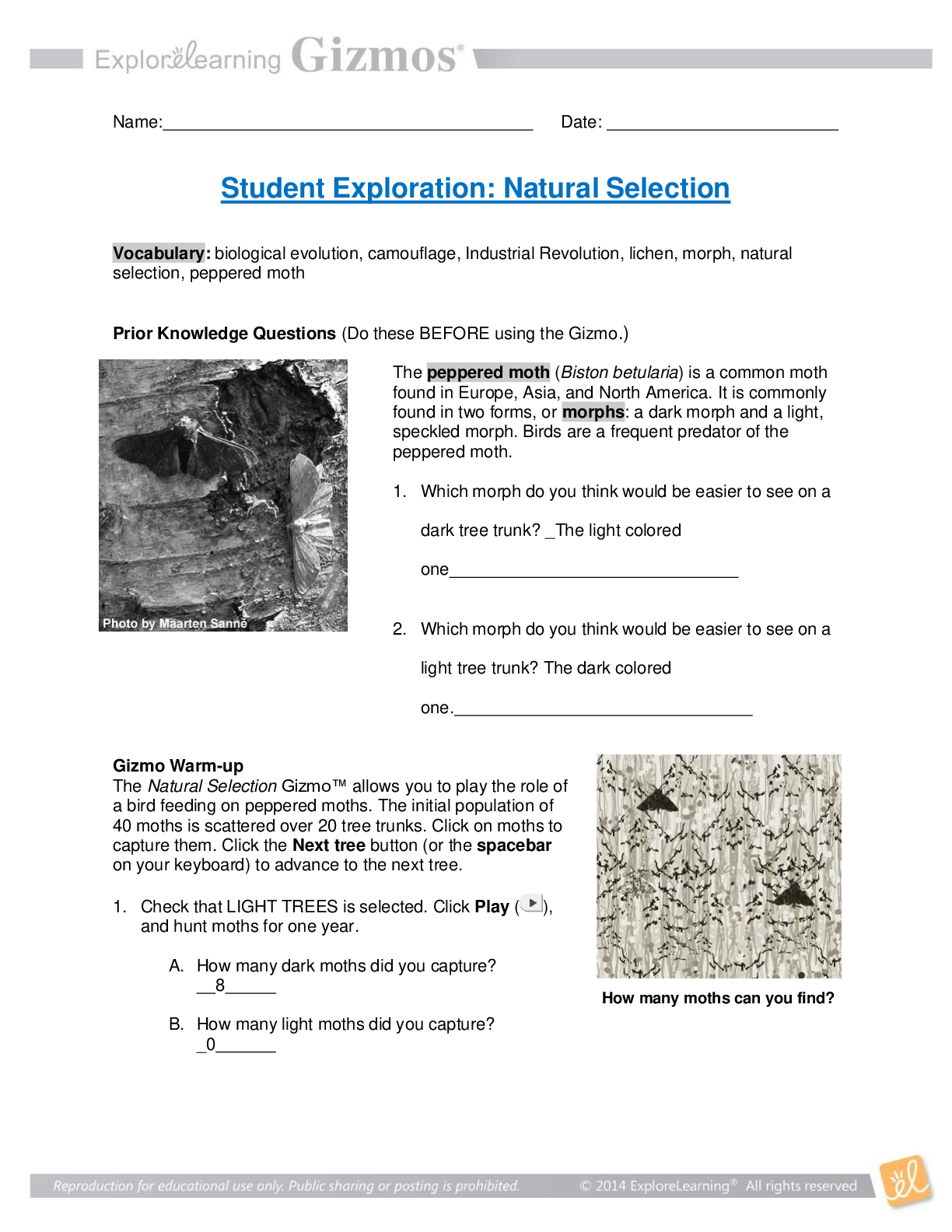
Reviews( 0 )
Document information
Connected school, study & course
About the document
Uploaded On
Jul 04, 2021
Number of pages
8
Written in
Additional information
This document has been written for:
Uploaded
Jul 04, 2021
Downloads
0
Views
136


